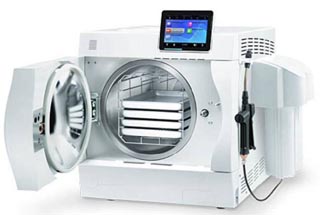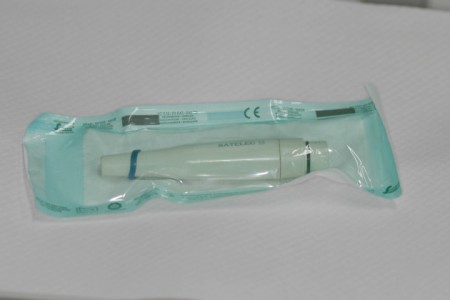STERILIZATION
Disinfection/sterilization is not only important in relation to AIDS but all infectious diseases, including hepatitis. The AIDS virus is extremely weak and easily eradicated in the external environment. There are other more resistant microorganisms that must be fought tenaciously. Physical sterilization/disinfection is carried out with autoclaves or steam sterilizers.
Our Office Sterilization
Our office was designed to try to optimize all operations, especially those aimed at verifying sterilization and disinfection. The room for cleaning, disinfection and sterilization of instruments is positioned between the operating rooms and communicates with each of them through secondary doors. To allow our patients to see the side adjacent to the corridor it was built with a glass wall. The sterilization room contains:

• Two steam autoclaves “class B”. They meet the latest European safety standards. They have an apparatus for computerized recording of all the data of each sterilization cycle.
• A rapid cycle autoclave for sterilization of the drills.
• An apparatus for cleaning and lubrication of the drills.
• A packing machine for sealing instruments.
• An ultrasonic tank.
• 2 basins for the initial chemical cleaning of the tools.

Sterilization Procedure
All instruments used, including cutters, are put away after each patient, immersed in a basin containing a detergent for initial cleaning. They are then washed thoroughly with special soaps, dried, packaged, sealed and sterilized in autoclaves. The packaged and sealed tools maintain sterility longer.
The packages in which the sterile instruments are contained have 3M detectors which indicate successful sterilization. Weekly, the autoclaves are checked further with detailed tests and the results are transcribed on a special register. Every month sterilization procedures are repeated also for instruments not used.

